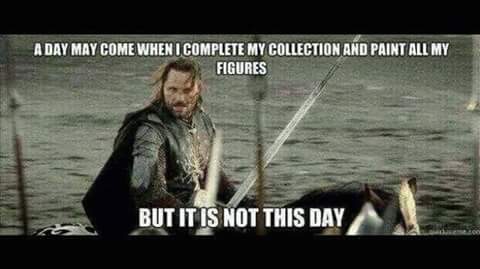Sort of. Our semi-annual mega-game, played on a 16x6' table, is loosely based on the action at Prokhorovka on July 12th, 1943. To use Flames of War v.4 we had to "bath-tub" it down to playable scale, though even then the numbers of tank models involved were huge.
All artillery except dual purpose elements and mortars were off table. The Germans automatically got aircraft the first two turns and then each side threw one dice, if the relative scores were two greater then that side got two aircraft. A roll of "6" on a d6 would produce a severe thunderstorm. As it happened, it never occurred. Each side has programmed reinforcements. The scenario was harvested off the Battlefront website.
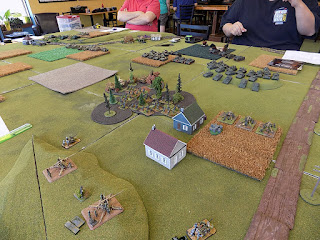 |
18th Tank Corps on the far left, part of 29th Tank Corps next to
the railroad berm. Facing infantry-heavy 1st SS Panzer. |
 |
On the other side the rest of 29th Tank Corps and 2nd Tank Corps
face the rest of 1st SS Panzer. |
At this point the Soviets have 10,500 points on table against a mere 5,000 German. This left the latter with little choice but to absorb the attacks and hope to counter-punch when the rest of the SS Panzer Corps put in an appearance. A bunch of Lend-Lease Churchills were found in the 18th Tank Corps list.
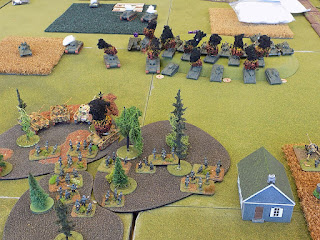 |
Great execution at first on the right as Pak40s and MkIVs take
a heavy toll. |
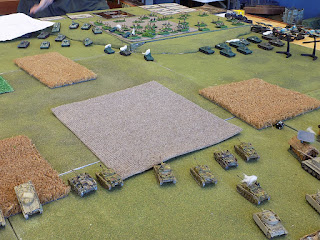 |
2nd Tank Corps begins to advance Turn 3 just as elements of
2nd SS Panzer arrive on the German right. |
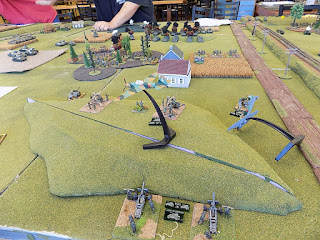 |
The only aircraft shot down all day for either side. Rockets are
very (too) powerful. |
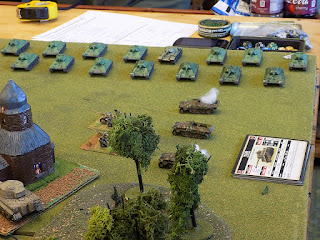 |
2nd Guards Tank Corps arrives on the flank of 2nd SS on Turn 5.
They now face two tank corps. |
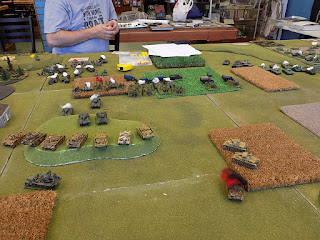 |
With good German saves they are making progress against 29th
Tank Corps on the right. |
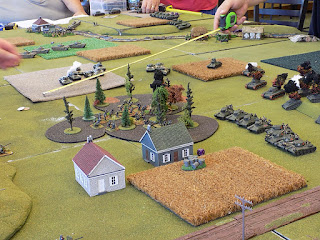 |
Bad saves on the left mean the panzergrenadiers are soon to
be overrun in assault. |
The Soviets have such a preponderance in tanks and mobility that even light-weights became effective when maneuvered behind or on the flanks of the desperate Germans. Airpower has been largely Soviet and when the Germans did show up their attacks were easily shrugged off whereas the rockets could be devastating.
 |
Most of the air support for both sides was on the left. Here a
rare attack on the right. |
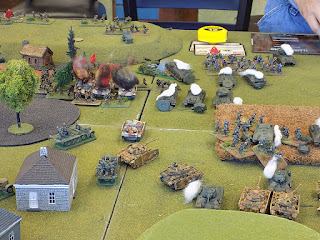 |
Despite misplaying the assault rules, the objective will shortly
be in German hands. |
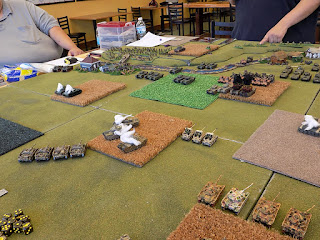 |
| 3rd SS arrives on the left, but so do two more Soviet formations! |
 |
29th and 18th Tank Corps are spent on the right. German mortars
relocate to get within range. |
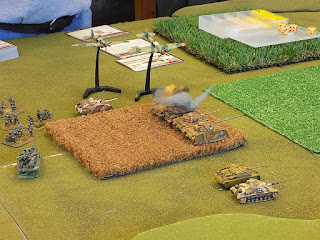 |
Verdammt Sturmoviks! Even a trio of quad 2cm SPAA couldn't
stop them. Aircraft are very survivable in v.4. |
 |
| And just as we begin to relax, a new Soviet formation rolls on. |
At this point we have approximately 21,000 Soviet points against 15,000 German. Since each previous Soviet group has whittled down the Germans it is an even more significant advantage.
 |
| Soviets running wild on the left. Even Rudel can't slow them. |
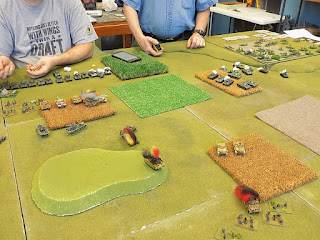 |
| Nothing to do but slug it out on the right. |
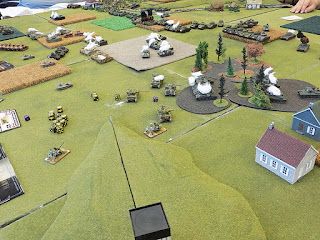 |
Part of 1st SS and all of 3rd SS are ruined. The remnants will
break. |
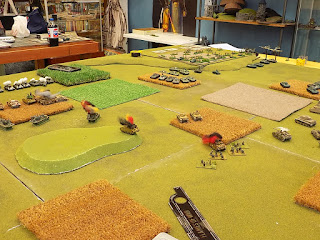 |
A final shot as we near the end. Soviets on their last gasp on
the right. |
As we reached Turn 12 and the end, a draw was declared. All the German formations on the left, both of them, had broken and fled along with two Soviet. This left three objectives in Soviet possession. On the right all four Soviet formations were broken, leaving three objectives in German possession and one that we couldn't reach in time. So in terms of formations it was six to two in favor of the Germans but as the adage and myth goes, they could afford the losses.
Now to begin planning the 2020 game!
